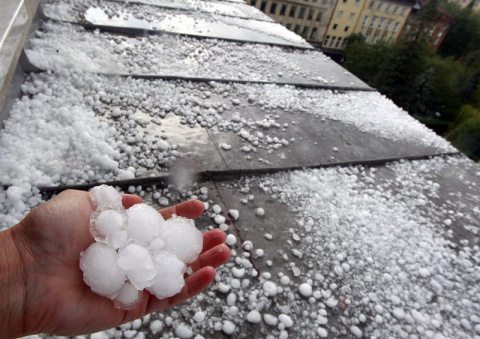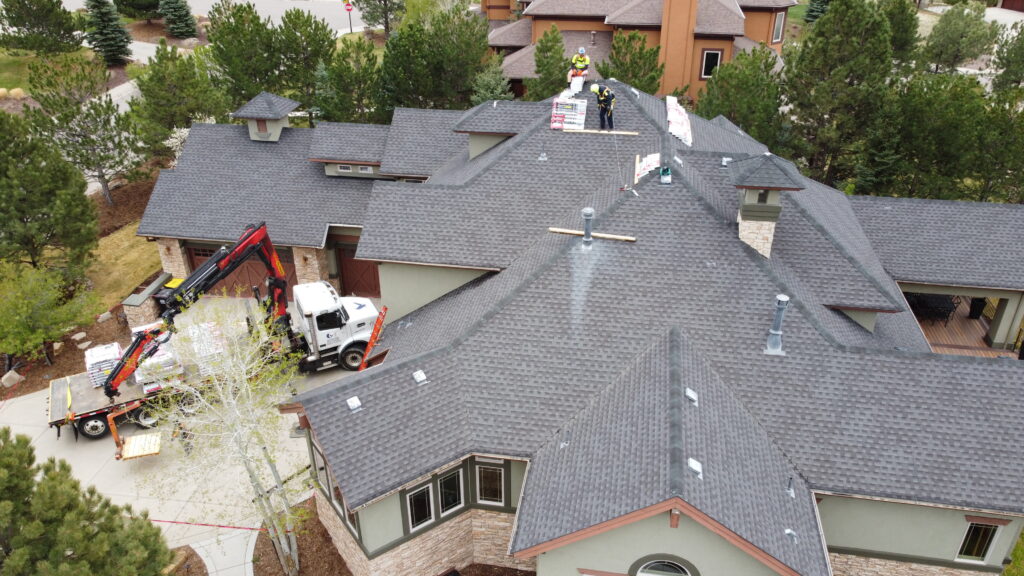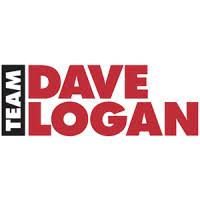Introduction
Your roof protects everything and everyone underneath it. So, hailstorm damage and subsequent roof leaks can create huge headaches. Most homeowners have insurance policies to cover unexpected damage caused by hailstorms. But, the storm damage insurance claims process is often very complex and confusing. The purpose of this article is to explain the insurance claims process for roof damage from wind and hailstorms. This includes whether to file a claim, when to file, and how to ensure all damage is covered.

Homeowners’ Insurance Policy
Before diving into the claims process, it’s important to understand the specifics of your insurance policy. What coverage is provided? How long do you have to file a claim? What is your deductible? The coverage and cost of roof damage could vary greatly depending on the details of your policy. Here are some key terms and coverages to look for in your policy:
Actual Cash Value vs Replacement Cost Value.
When it comes to storm damage roof insurance claims, there are two basic types of policies. Those are Actual Cash Value (ACV) and Replacement Cost Value (RCV) policies. The best way to explore the differences here is to look at a hypothetical claim. So, let’s assume the following facts: (i) You suffered hailstorm damage to your roof, (ii) your roof was last replaced 8 years ago (iii) your insurance deductible is $2,500 ,and (iv) For an average-sized asphalt shingle residential roof, the roof should cost about $16,000 and have an expected life of around 20 years. This roof is currently 8 years old. So its’ current depreciated value is around $9,600, based on its remaining useful life (60% of $16,000).
Actual Cash Value (ACV) Policy
With an ACV policy, the insurance company only pays for the actual depreciated value of that roof, minus your deductible. So, for this claim the insurance company will issue a scope of damages that lists the full replacement cost, but they will only pay for the current depreciated value of the roof. That amount would be $9,600. But from that amount they will subtract your deductible of $2,500 and issue a check to you for $7,100. Now, we have already established that the cost to replace the roof is $16,000. That means you are going to have to pay for most of this roof out of pocket. With an approved ACV claim, the insurance adjuster will deliver a check to you and you are on your own to get the roof replaced. The storm damage insurance claims process is simpler with an ACV policy, but it’s more costly for you.
Often homeowners don’t realize they have an ACV policy until it is too late. An ACV policy does come with a lower premium. That’s why it may seem attractive for someone looking to cut costs or someone who is only planning to be in a home for a few years. However, in Colorado, where hailstorms and high winds are prevalent, it’s probably not a risk worth taking. Talk to your agent and you can make your own informed decision.
Replacement Cost Value (RCV) Policy
With an RCV policy, which is what most homeowners have, the claim will look different. With an RCV policy, the insurance company will once again issue a scope of damages listing the full replacement cost. But this time they will pay the full cost to replace the roof minus your deductible. So, in this case, they would pay a total of $13,500 towards your new roof. That’s the full $16,000 replacement cost minus your $2,500 deductible. The process would be a little different here too.
The insurance company will pay you the current value of the roof upfront. They will also subtract your deductible from this amount. So, you will get a $7,100 check when the claim is approved. Once your contractor completes the repairs and submits a final invoice to the insurance company. Once approved, your insurer will release the rest of the payment to you. This second payment is the depreciation payment, and, in this case, it would be $6,400. These two payments combined equal the total covered claim amount of $13,500. You will then add your deductible of $2,500 to that and pay the contractor the $16,000 replacement cost.
Do I Have to Pay My Insurance Deductible?
As stated above, your deductible is the portion of the covered repairs you must pay out of pocket. The deductible can be a fixed amount or a percentage of your home’s value. Laws differ from state to state but in Colorado it is illegal for your contractor to pay, waive, or rebate any portion of your deductible. So, in the case outlined above, if you have an RCV policy your total out of pocket cost will be your deductible.
Getting Multiple Estimates for a Storm Damage Roof Insurance Claim
You are entitled to work with the contractor you choose and are not required to get multiple estimates. When it comes to a storm damage roof insurance claims, getting multiple estimates may make sense for an ACV policy but not for an RCV policy. For an ACV policy you only get that one check and that’s it. So, at that point it really becomes a retail job, and you should get estimates. But for an RCV policy, which is what most people have, the insurance company is only going to pay the LESSER of (i) the amount listed on the scope and (ii) what you actually pay.
So, in the example claim above if you find a contractor to do the job for $13,500 total, your insurance company is only going to pay $13,000 minus your deductible. In this case that would be $11,000 and you would still have to pay your $2,500 deductible. So going with the cheapest estimate only saves your insurance company money and gets you a cheaper roof. This fact, coupled with Colorado insurance law, makes it impossible to profit from your storm damage claim without engaging in insurance fraud.

Hiring the Right Roofing Contractor
Your best bet after a storm, and before calling your insurance company, is to call a roofing contractor with storm damage roof insurance claim experience. You don’t want to file a claim if you have no damage as this can negatively affect your policy status with some insurance companies. The inspection should be free, and if the contractor finds damage, then you can notify your insurance company and the claims process can begin.
If you hire a contractor with significant experience with the storm damage insurance claims process, they will be able to help you the rest of the way. The first step would be meeting with your adjuster at the initial appointment. Next is getting any necessary changes to the scope approved by the insurance company. Your contractor will then work with your insurance company to get all funds released to you so you can pay your final invoice once the work is completed.
Colorado Superior Roofing & Exteriors has handled thousands of roof damage insurance claims since 2002. We are a complete exteriors that is A+ Rated with the BBB and Members of Team Dave Logan. Please call us if we may be of assistance in any way.







